How To Catch Snook & Redfish In The Winter [Paddle-Fishing Video Special]
- By: Luke Simonds
- on
- Found In: Fishing Tips, Redfish Fishing Tips, Snook Posts, SUP Fishing
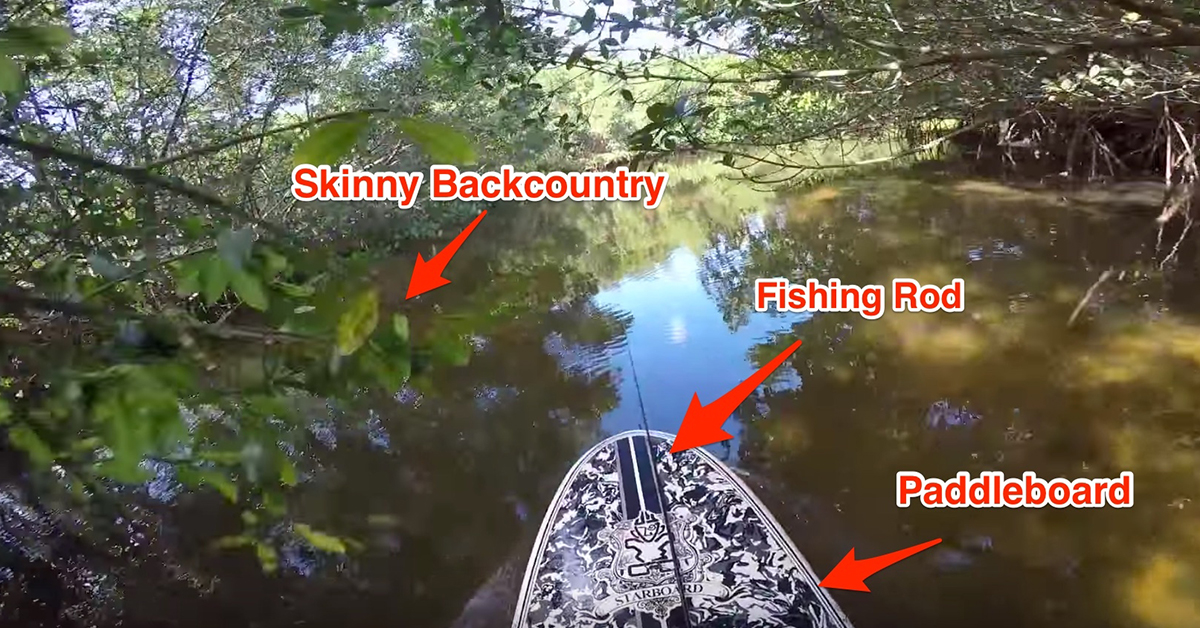
In my family, winter means two things…
- Christmas
- Backcountry paddle-fishing time!
Hunting snook and redfish via paddle-craft (paddleboard fishing or kayak fishing) up in the backcountry creeks and bays is an absolute thrill, and now (yes, the winter) is the absolute best time to do it.
Why?
Because a good amount of big spawner snook (along with a bunch of small to medium size snook) and redfish of all sizes seek refuge from the cold up in wind-protected creeks, bays, and canals because those areas often do a better job at holding onto warmth after cold fronts push through.
Not to mention, there is plenty of baitfish, shrimp, and crabs for them to dine on in these backcountry areas.
An added bonus is that the darn mosquitoes and no-see-ums are must less active (and in many cases obsolete) now that it’s getting colder.
But best of all, these backcountry waters are typically at their peak in visibility this time of the year, so it’s a perfect recipe for some awesome sight fishing.
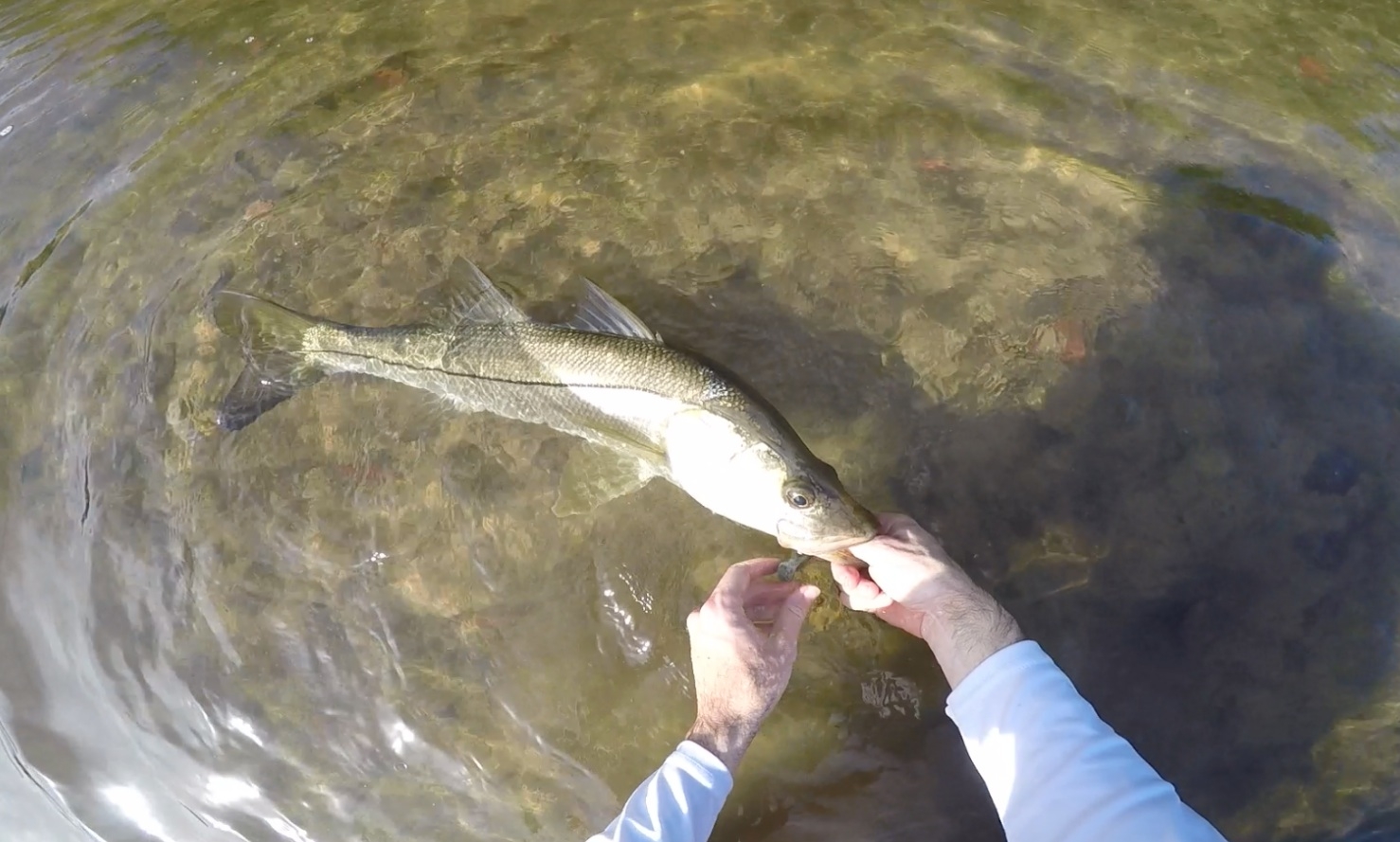
Also, since we know that inshore fish like snook and redfish hate cold water, it also makes them easier to find since we know they will be whereever the water is warmest.
And in my opinion, there is no better way to target these fish in the narrow creeks than via a paddleboard (aka SUP) because of the following three reasons:
- Paddleboard fishing allows for a stealthy approach in the backcountry
- Paddleboards can go pretty much anywhere (walking through shallows or carrying over land is a breeze)
- [TOP REASON] The paddleboard gives you an elevated point of view for sight casting
Note: Kayaks that are stable enough to paddle from standing up can certainly cover the same benefits too.
How To Find Backcountry Creeks & Bays
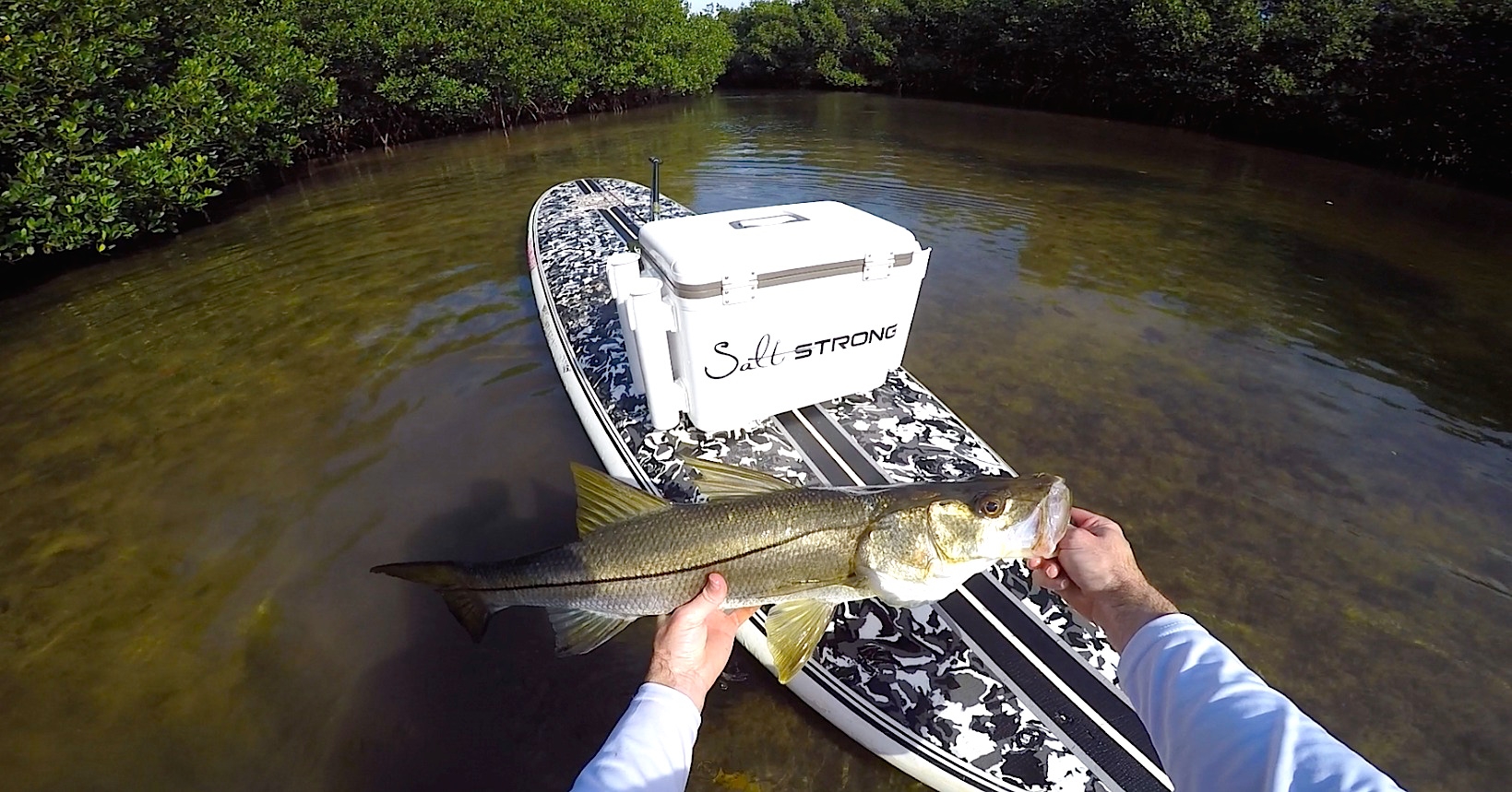
If you haven’t done this kind of fishing before, you will be shocked at how many creeks and canals are out there that hold fish…
Even the smallest of canals and creeks (some so small that a kayaker has tough time getting through) can hold really nice inshore fish.
My favorite way to find these hidden creeks and lakes is by using online maps like Google or Bing… especially in the winter when many of these rarely fished canals and hidden lakes are stacked with snook and redfish just waiting for a brave kayaker or paddleboard angler to come out and play with them…
Click here to see which maps are best along with tips on what to look for.
How To Fish Narrow Creeks [VIDEO]
Narrow creeks can be tough to fish because there isn’t much room for positioning yourself in the right spot to make a good cast and effective presentation.
But since we know that it’s best to present a bait to a fish from a position where it can be seen, and we know that snook and redfish most often face into the current flow to ambush prey, follow these two rules:
- Fish the outgoing current when going into shore (aka inland)
- An incoming current is best if you’re starting from inland and working towards the open bay.
Here’s a quick video of a lunch-time trip that I went on just last week (I was exploring a new creek near Tampa Bay during an outgoing tide).
Make sure to watch how I was working the lure back with the current when the fish hits:
What Lures to Use In Creeks
This type of fishing most often require extreme stealth, so artificial lures are preferred since live bait often requires hatches to be opened/shut frequently and the added movement associated with re-baiting after a cast that finds its way into a mangrove tree.
The most common bait up in these small creeks and backcountry bays are most often small, so it’s important to match the size of the bait you’re seeing.
Here are my two favorite lures for catching snook and redfish in the winter:
- Very shallow creeks: Soft plastic baits in the 3″ to 5″ range on hooks (like the Gulp Jerk Shad used in video above). Click here to see my tips on how to rig a weedless Berkley Gulp Jerk Shad.
- Creeks with 3+ft channels: 3″ soft plastic baits rigged on light jig heads
What Equipment to Use
As for rods, reels, line, and leader, these waters are often very clear and calm water, so it’s best to go as light as possible.
Line
For line, my preference is 10 lb braid as the main line with a 25 lb fluoro leader… click here to see how to rig this leader.
Rod
And for my rod, I like a 7’6″ Medium action rod to get maximum casting distance with enough feel to perform accurate short to medium distance casts when needed…
Click here to go to a direct link where you can get the exact TFO rod that I like most online (it’s where I buy mine because they’re very hard to find).
Reel
In my opinion, the reel is the least important feature of all because it’s sole purpose is to retrieve line and provide drag (which pretty much all reels can do just fine)… so save your money here if anywhere.
So I go with the smallest and lightest one possible because even a small reel can pack enough 10 lb braid to not have to worry about getting spooled.
(This video below shows a 2500 Shimano handling a ~50 lb tarpon)
My loyalty has been with Shimano reels for a long time and I recommend their Symetre series for overall value and their Stradic Ci4 if you want an incredible reel (the Ci4 is what I used in both videos above).
- Shimano Symetre 3000 – $99.99 – Solid option for reds, snook, and trout on the flats.
- Shimano Stradic Ci4 2500 – $219.99 – My #1 favorite… like Symetre, but lighter, smoother, and will last longer.
Conclusion

Winter time fishing can be incredibly rewarding when done properly… especially if you like to combine hunting and fishing.
And an added bonus is that it doesn’t get sweltering hot once the sun is up, and you don’t even need to get up early… the top bite is often in the middle of the day to the afternoon when the water gets the warmest.
Best of all, you don’t need a fancy boat or paddle-craft to have success… the board I use is terrible for fishing (it’s just an old demo board made for surfing that I bought used about 5 years ago).
Important Note:
If you want to get better at finding the best spots to catch snook, redfish, and trout, then sign up for our Inshore Slammer course because it contains detailed videos and articles that fully explain my top strategies for consistently catching inshore slams even without wasting time and money on live bait…
Click here to learn more.
P.S. – If you think any of your angler friends or fishing networks would like this, please Tag them or Share this with them. It would mean a lot to me.
Fish On!
Related categories:
STOP WASTING TIME ON THE WATER!
Do what the “SMART ANGLERS” are doing and join the Insider Club.
Here’s what you’ll receive today when you join:
- Weekly fishing reports and TRENDS revealing exactly where you should fish every trip
- Weekly “spot dissection” videos that walk you through all the best spots in your area
- Exclusive fishing tips from the PROS you can’t find anywhere else
- Everything you need to start catching fish more consistently (regardless if you fish out of a boat, kayak, or land).

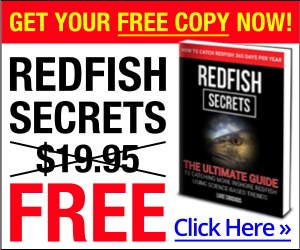

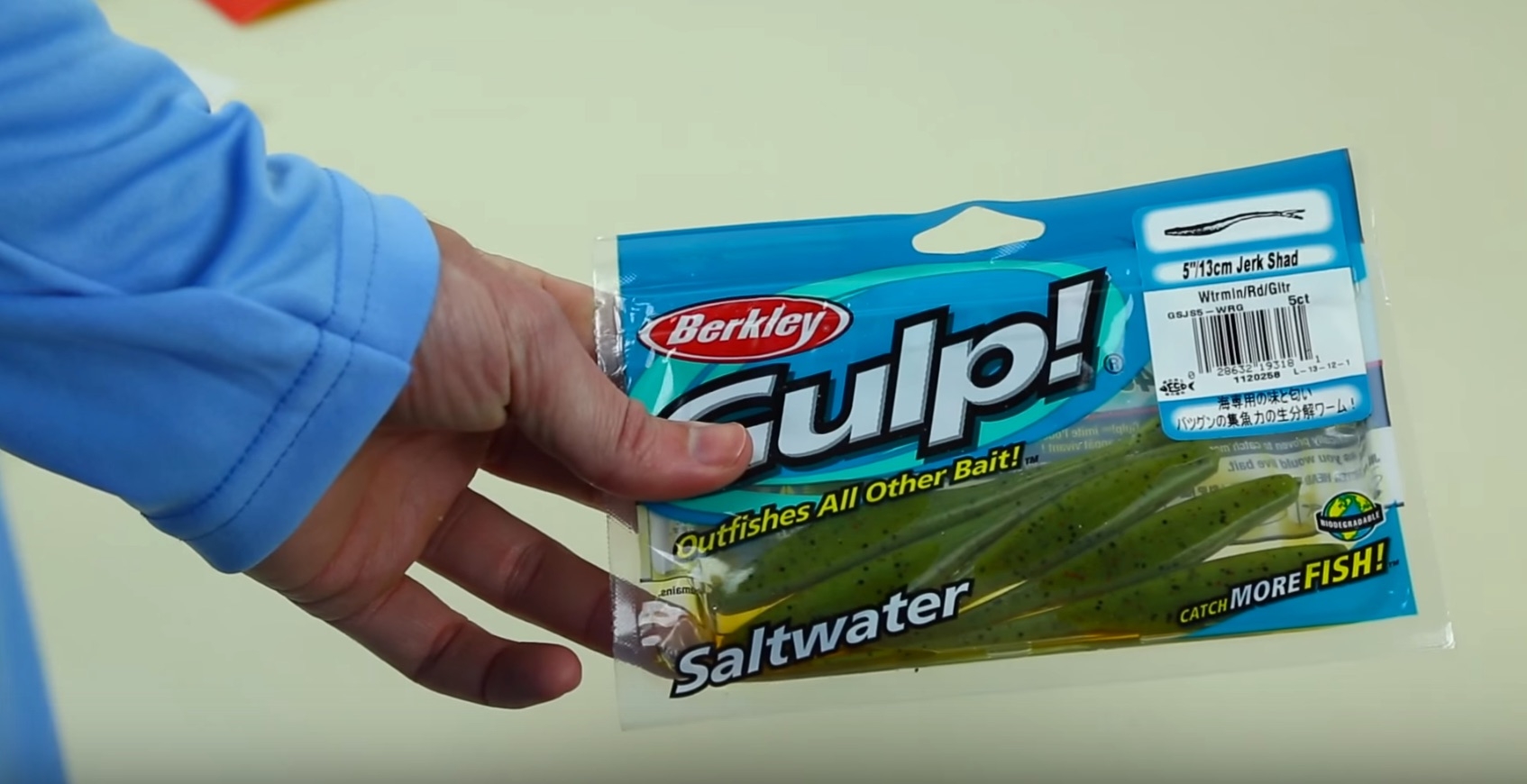







Hi Luke
I also sent this question to Tony as it seems like you both spend a lot of time in kayak’s or on a paddle board. Do you ever have to worry about alligators in a kayak? I have one area I want to fish this spring by a golf course that I’ve heard has a few really large alligators. Any tips or advice?
Thanks
Jason
When fishing from a kayak or canoe in lakes, I have very little concern for gators because I grew up on a lake and spent an absolute ton of time out there and watched countless times as gators would make sure to stay a long distance away.
The only worry you should have is if you see one coming towards you because some have been fed by humans and those are the dangerous ones… if you see one coming towards you (odds of this are very slim), start heading the other direction.
Thanks, Luke….up here in the Crystal River area, there are lots of warm springs to help make the creeks and rivers more fish friendly during the cooler months. Hopefully, most of our snook found these rivers before our latest cold weather die=off.
My only departure from the gear you suggest is the rod and reel. I prefer pairing G Loomis IMX or NRX rods (7′ 6″ fast action / medium power) with the Shimano Stella 3000 reel. I believe this is the lightest outfit available, and the newer Stella requires absolutely no oil or other maintenance.
Yes, I was pleased to see some footage of a ton snook packed in some springs up there because they are sure to withstand the cold snap.
As for the Stella, I recommend giving the Ci4 a shot next time you are in need of another reel because it is a bit lighter and will save a good amount of $$$.
Freshwater fisherman…for the most part but great info that I can apply to my waters. Thank you.